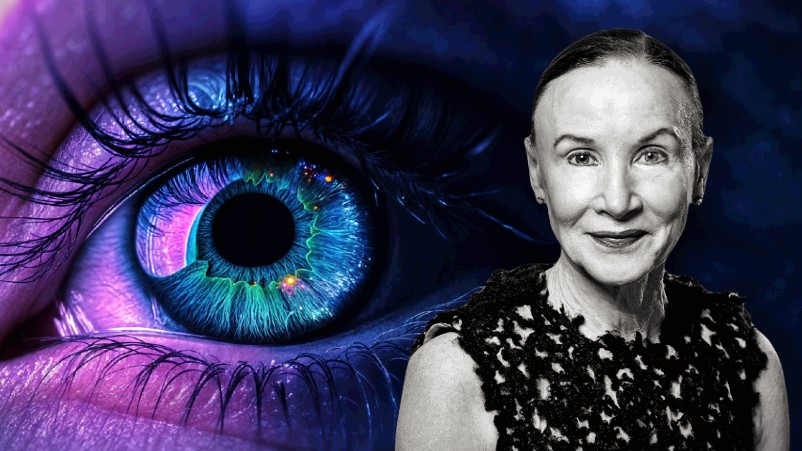Foxtel Upfronts: Australia lurches rapidly to US market on multiple TV, video audience currencies; Media agency groups concede inevitable, OzTAM prepares for strategy overhaul

Multiple currencies: Foxtel Media CEO Mark Frain unveils 'frenemy' plans with streamers on new audience systems.
Foxtel Media’s provocation last week at its 2024 Upfronts showcase to next year develop alternative TV and video audience measurement systems to the broadcaster-controlled OzTAM ratings currency has triggered concessions from key media buying groups that the Australian market is following the fractured US media sector versus a more collaborative UK media position on audience measurement. OzTAM chair Mark Buckman warned of the downside and complexity of the US market’s multiple currencies, citing US TV chiefs who say a single measurement system like that under Australia’s OzTAM remains the best market solution. Still, OzTAM heads into a sweeping strategy review this month as it appears likely Australia will split into two core camps – measurement of broadcaster assets in TV and video and a coalition of other digital streaming and video players from possibly Netflix to YouTube, Samsung Ads, SBS and Foxtel. Another posse of measurement players is also quickly emerging in cross-media measurement like Beatgrid, which media agencies are deploying in their own right along with other providers to address not just broadcaster “Total TV” but all screens across all platforms. More complexity is the only certainty.
We don’t see this as a TV network issue. We see it as an industry issue with providers unable or unwilling to collaborate or see the value in it [unified audience measurement].
OzTAM chair Mark Buckman is trying diplomacy after Foxtel Media CEO Mark Frain backed up his assertions earlier this year at the Future of TV Advertising forum that the broadcaster-turning-streamer would pursue alternative TV and video audience currencies to OzTAM’s dominance. Just as the five-year wait is over for broadcasters delivering on what, at the time, was hailed as a world first bringing linear and digital audiences together under its VOZ initiative, the Australian market looks certain to at least experiment with alternative measurement systems to unravel audience duplication and reach from broadcaster assets and other video and ad-tiered streaming services which are messing with established audience currencies.
At stake is billions of dollars in all screen advertising budgets.
Break up
A unified measurement system for broadcaster assets and other streaming and video operatives, in the short-term, was a dead bounce, according to Kristiaan Kroon, Chief Investment Officer of OMG, the country’s biggest media buying group with $2bn-plus in advertiser budgets.
Kroon said Foxtel Media’s announcements last week to align with Kantar on its set-top box viewing data to check Nielsen’s OzTAM data and the formation of the Video Futures Collective, which is at proof of concept stage, is “definitely a challenge to the incumbents”. Australia, he acknowledged, appears to be “very much heading down a US path”, in which Nielsen’s supremacy in TV ratings is under threat from what he called “alt currencies”.
“The market is getting far more complex,” Kroon told Mi3. “You have some very large local players and some truly enormous global businesses who don’t tend to partner with others. We don’t see this as a TV network issue. We see it as an industry issue with providers unable or unwilling to collaborate or see the value in it. So I think advertisers have to build frameworks and understand how they’re going to work in a multi-audience currency universe. There is complexity, yes. But that doesn’t change the fact that it is going to happen, in our opinion.”
Make up
GroupM Chief Investment Officer Melissa Hey was equally resigned to the inevitable of a multi-currency market between broadcaster linear and video assets and a coalition of digital-only video operatives in streaming – and possibly social video, although the latter brings with it a firestorm on acceptable methodologies and comparable benchmarks.
“We did want to hear some movement to be able to look at broader video measurement – 100 per cent,” Hey told Mi3. “The challenge [from Foxtel] has been thrown out there and it was something we wanted to hear and want to investigate – and our clients want to understand. The ideal would have been if it was all together.”
Foxtel is a GroupM client but whatever the media group’s ambitions, Hey said ultimately the currency splinter in digital video from the Foxtel-led coalition could, in the mid-term, reunite with the broadcasters OzTAM currency.
“It could all come back together here,” Hey said. “It looks that way on the face of it [multiple currencies] if you look at it for next year. Foxtel’s announcements are a good market mover and sort of puts the challenge back out there but they've still got a lot of work to do. You've obviously got VOZ going down their path. I still think it could actually all come back together longer term.”
Dentsu Media CEO Danny Bass said the market would ultimately decide in coming months on whether it would go multi-currency but backed the need for VOZ.
“We’ve invested so much in VOZ now we’ve got to support it – we can’t take a back step on it,” he said. “Foxtel is unique in the way it distributes its content and with set-top boxes. It’s encouraging that they’re looking at something else as well. I don’t think Foxtel has made an error in putting this forward. It’s on all of us to lean into this but to quote Abraham Lincoln for the first time, ‘A house divided can not stand’. It’s imperative they get together on this.”
OzTAM’s Buckman said broadcasters remained open – the trouble is in alignment and methodologies for bringing others into its currency.
He cited Paramount’s US-based Chief Research and Analytics Officer Radha Subramanyam’s warning to the Australian market earlier this year at the Future of TV Advertising forum that it should favour one currency. “In the US, we don’t believe there can be just one [currency] … what we are hoping for is interoperability,” Subramanyam said. “But if I could only have one, I’d be a lot more rested.”
Open relationship?
That much is true for single measurement of broadcaster TV and video assets, which unlike Australia under OzTAM, the US has rejected (primarily because of frustration with TV ratings provider Nielsen). The local market wants better visibility and measurement across all players – YouTube and the rapidly increasing number of streaming platforms which offer ad tiers.
Discussions between OzTAM and YouTube, for instance, have been an on-off romance but the ultimate test is whether OzTAM can and wants to go beyond broadcaster assets.
“That's an incredibly valid question,” Buckman said. “And I think the way that VOZ is addressing this is really interesting. It’s looking at it in the context of TV and TV-like audiences, so BARB (UK) is quite happy to include an English Premier League game played on YouTube, but it’s not going to measure the 10,000 cat videos that are on YouTube. We're in in constant dialogue with Google in terms of there is potential to include platforms in total screen audience measurement – but it'll be on an apples to apples basis. An in the past, there's been a rejection of that, including the use of SDKs and to be measured in the same increments.”
It's these points of contention that is allowing “alt currencies” in the words of Kroon, to emerge. More is to come, he said, including the extent of co-viewing via connected TVs impacts current measurement reporting.
Later this month, OzTAM heads into a strategic review of its services and the market as new CEO Karen Halligan lands.
Buckman hinted on OzTAM’s preparedness to consider all possibilities. “As the market evolves we need to continue to look at these things and we'll continue to do so.”


